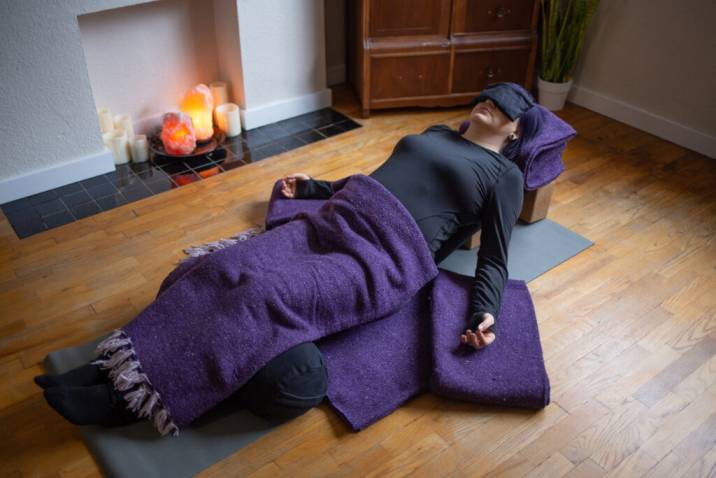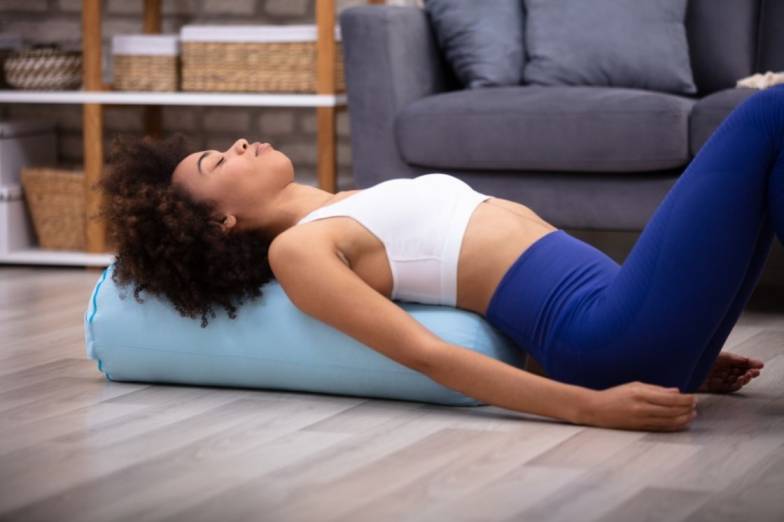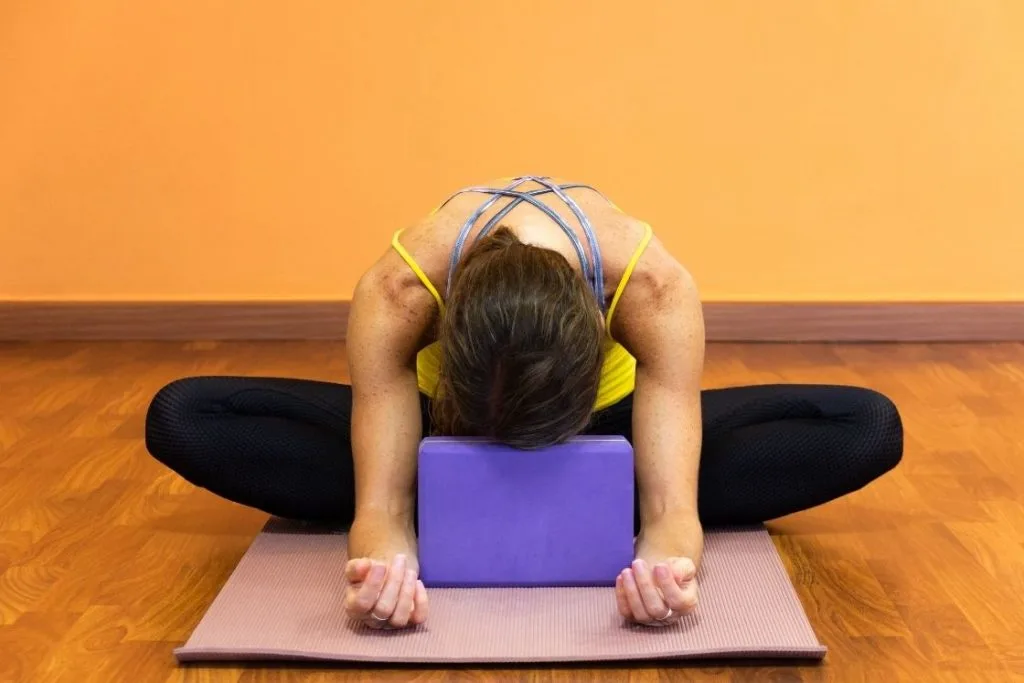Embrace Relaxation: Restorative Yoga Poses With Bolster
Posing in remedial or restorative yoga poses with bolster has numerous advantages and is simple to include into your everyday schedule. Doing one position for ten minutes each day can provide a boost of energy that is superior to sugar or coffee. By supporting the joints and tissues and calming the brain, these mindful relaxation poses provide the body with the support it needs to rest, heal, refuel, and recuperate. To maximize the advantages, try a few postures together or try them separately.
What is Restorative Yoga?

Passive stretching and slowing down are key components of restorative yoga, which is a gentle kind of yoga. In a restorative yoga session, you maintain the positions for two to ten minutes, which sets it apart from other forms of yoga.
The use of yoga props for support during a restorative yoga poses with bolster enables the body and mind to actively relax, making it possible to hold the postures with ease.
Must Know: What Are the Signs of a High Vibration Person?
3 Basic Restorative Yoga Poses
I asked Nicole Windle, a master yoga instructor, to share her go-to positions for healing. Everyone, regardless of body shape or degree of experience, can perform these 10 yoga poses. They are healing. You may hold each pose for as long as you like.
1. Supta Baddha Konasana's Reclined Butterfly
Step 1: Place a pillow behind your head and lie down on your yoga mat.
Step 2: Bend your knees out to the sides and bring your foot soles together.
Step 3: For extra support, place pillows beneath the thighs.
2. The Supta Matsyendrasana, or Reclined Twist
Step 1: Hug your knees into your body while lying on your back.
Step 2: Relax your shoulders to the floor and spread your arms in a T form on the floor.
Step 3: Lower your knees so they are piled on top of each other on each side of the floor.
Step 4: Repeat on the opposite side after staying for a few breaths.
3. Balasana, or the Child's Pose
First, start by getting down on your hands and knees. Your knees should be hip-distance or wider open.
Step 2: Lower your head to the floor by reaching your arms forward and pulling your buttocks toward your heels.
Step 3: You can either stack your hands under your forehead like a pillow or place them down by your feet.
5 Ways a Bolster Transforms Your Yoga Experience

1. An opening for the heart
A heart opening is a wonderful restorative pose for your summer practice. Heart openers balance the pitta dosha and encourage relaxation by allowing extra heat to leave the body. These poses help us enlarge the heart region both physically and emotionally while also enhancing and balancing the digestive fire. We relate to ourselves and others more healthily and receptively when our hearts are open. From a physiological standpoint, opening our hearts and lungs allows for more airflow and invites more oxygen into the body as a whole.
Read Also: Yoga For Golfers: 7 Yoga Poses Every Golfer Should Practice
2. The Healing Twist
The ideal posture to incorporate into your fall sequence is a restorative yoga poses with bolster. Twists assist release stagnation in the gut, enhance digestion, relax the nervous system, and provide room for the ribs and spine. This is especially helpful for supporting our immune system and promoting blood flow to our organs during the start of the cold and flu season.
3. Leaning against the wall
One of the best ways to slow down the body is to gently invert. As seen above, this healing pose can be performed with the legs extended with pelvic support, on a chair, or up the wall. Inverting not only encourages relaxation but also improves circulation and venous drainage, relieves swollen or constricted legs and feet, stretches the hamstrings and lower back, and helps some people with lower back discomfort. It is particularly advantageous to perform after extended durations of sitting or travel. While inversions may be performed anywhere, at any time, and in any location, performing them prior to bedtime helps promote restful, deep sleep.
4. Konasana, Supta Baddha
Since many of us retain a lot of stress patterns in our hips and knees, supta baddha konasana, often called "reclined butterfly pose," is a terrific method to free them out. Tight hips also have an effect on the back, which might have an effect on the kidneys. Because it can assist increase circulation and stimulate the heart and kidneys, this pose is quite popular. Additional advantages include lowering stress and regulating the neurological system.
5. The Gomukhasana
Although this posture doesn't seem to be doing much at first, it's actually accomplishing a lot more than just expanding the hips. In addition to helping with digestion, gomukhasana, also known as "cow-face pose," may extend and relax the lumbar spine by releasing the upper back when combined with the forward fold. If we're not attentive, we might put tension on the back that we don't really feel since we usually experience the sensation in the hips. Simply provide some support (like a blanket) behind the hips and let the back rest in a rounding posture if you feel yourself rounding in the back. The forward fold becomes more dynamic and leading with the heart can be appropriate if the hips and back are more open and one can hinge at the hips. Be kind to yourself if you're unsure!
You May Also Like: Yoga Asana That Requires Balance Crossword: A Complete Guide 2024
FAQs
What is restorative yoga practice?
All skill levels can benefit from restorative yoga poses with bolster, which is a calming technique that uses props like bolsters, blankets, and yoga blocks to maintain yoga positions (asanas) for extended periods of time. It is a technique of profound relaxation that stresses the contemplative part of yoga—the connection of body and mind.
Who would benefit from restorative yoga?
A daily restorative yoga practice may help improve your mood, lower anxiety, and foster a positive mindset if you're dealing with stress, anxiety, or depressive symptoms.






